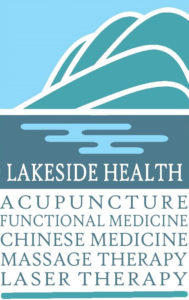Question:
I’ve been told I’m tending toward osteoporosis. What would you recommend?
Dr. Donna Rasplica, B.C. Reg. Doctor of Traditional Chinese Medicine, loves how traditional herbal medicines and therapies can be matched to the individual. She specializes in treating pain, chronic diseases, and problems of aging.
ANSWER:
The dance of bones.
In the US half of all women and 1 in 5 men will experience a fracture due to osteoporosis!
Some medications can promote bone loss. The most common are corticosteroids, aromatase inhibitors, loop diuretics, some contraceptives, acid blockers, and anti-depressants. 1 – 3% loss in bone density is common during peri-menopausal and menopausal years.
Martha Graham, the pioneer of modern dance, wrote “think of all the little bones in your wrist. It’s a miracle. And dance is a celebration of that miracle.” And dance can maintain that miracle! Keep moving, in any way possible. It’s the best medicine. Fun supported by science: walking for at least 4 hours a week decreases hip fracture risk 41% in women ages 40-75. Strengthening and balancing exercises lessen risk of falling and fractures by 75% in women 75 and older. Walking, tai chi, yoga, qi gong for balance and weight bearing. Simple hand-held barbells or resistance bands at the very least for strength-training.
Food, of course, is the other best medicine. Osteoporosis is a preventable ‘illness’. A diet rich in plant foods -vegetables, fruits, beans, whole grains, nuts, and seeds – promotes the slightly alkaline body chemistry optimal for good bone health. Red meat and sugar make you acidic and your body will buffer itself by pulling alkaline minerals, like calcium, from the bones.
Green tea contains vitamin K1 and abundant quantities of polyphenols which work by anti-inflammatory and antioxidant mechanisms to reduce bone resorption and stimulate bone growth.
In Japan the presence of fish in the diet 3 – 4 times a week is associated with reduced risk of hip fracture. One gram a day of the essential fatty acids in fish oil will do too. Of course, calcium (citrate is a good form), magnesium, boron, other trace minerals, and vitamins D3, K1 and 2 are important. Vitamin K, particularly in the longer acting form MK-7, ensures that calcium will deposit in bone where it belongs rather than tissues where calcification is not wanted, like brain, skin, tendons, and muscle.
Be careful with some leafy vegetables, for two reasons. Oxalates (oxalic acid) in beet greens, collard, kale, Swiss chard, spinach, can prevent you from absorbing calcium. Oxalates are like tiny shards of glass, famous as kidney stones but can also deposit in heart, joints, blood vessels, lungs, even the brain. Vulvodynia and fibromyalgia can be manifestations of excess oxalates. Putting kale in your smoothie every morning can lead to unexpected problems!
Oxalate crystals in bone can crowd out bone marrow cells, leading to anemia and suppressed immunity. Taking calcium with high oxalate foods creates an insoluble form of oxalate that gets excreted in stool – while this is good as it rids you of the dangerous crystals it also depletes the calcium that your body needs. For a list of high oxalate foods go www.upmc.com and search Low Oxalate Diet.
Certain bacteria like Bifidus lactis, Bifidus infantis, and Lactobacillus plantarum have the ability to consume oxalates, so taking them in probiotic form is useful. Good gut bacteria will also manufacture vitamin K for you.
My preference for maintaining and treating bone health are the complex herbal combinations of Traditional Chinese Medicine, rich in very precise nutritional value. Examples of herbs added to formulas for bone health and hormone balance are: astragalus, known to support oxygen-rich microcirculation and promote bone health in lab animals; drynaria or gu sui bu (‘mender of shattered bones’) increases bone absorption of calcium; eucommia, shown to significantly increase bone mineral strength and density in the hip and leg after ovariectomy (also linked to significant decreases in weight, BMI and fat tissue (PubMed: Am J Chin Med 2012)
As a demonstration of how powerful these herbal combinations can be, a patient’s bone density scan showed a 13% improvement in spine and 7% improvement in hip bone quality and strength – no longer osteoporotic – after 18 months on a formula containing these herbs.



